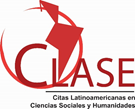ESTUDIO ANTROPOLÓGICO DE DOS ESQUELETOS ABORÍGENES DE LA CUEVA DE LOS INDIOS, HOYO DE PADILLA, CIENFUEGOS, CUBA
Resumen
RESUMEN
Este artículo presenta los resultados del estudio antropológico efectuado en dos esqueletos, uno de un individuo adulto y otro infantil, recuperados en el sitio funerario Cueva de los Indios, ubicado en el lugar conocido por Hoyo de Padilla, municipio de Cumanayagua, provincia de Cienfuegos, Cuba. Se trata de uno de los sitios arqueológicos más importantes y consiste en un gran abrigo rocoso en el que se detectó la presencia de un residuario arqueológico perteneciente a los grupos recolectores y cazadores que habitaron en esa región abrupta y boscosa del antiguo territorio indígena de Jagua, en una gran parte comprendido hoy en la provincia de Cienfuegos, al centro y sur del archipiélago cubano. Según los resultados obtenidos a partir de los restos humanos recuperados, se trata de un caso con características singulares de un entierro doble adulto infante, en el cual queda clara la íntima relación entre ambos individuos teniendo en cuenta la posición relativa de los dos esqueletos, así como la ubicación y posición del neonato en el contexto funerario. En cuanto al esqueleto del individuo adulto, el estudio evidenció su alta talla, la mayor reportada hasta 1987 para un esqueleto adulto del sexo masculino de este grupo cultural aborigen. Se identificaron también algunas paleopatologías en este esqueleto, tales como procesos infecciosos en la mandíbula, fracturas costales con avanzado grado de consolidación, aplastamiento y fusión de discos vertebrales causados por compresión y posibles deficiencias nutricionales a partir del hallazgo de las líneas de Harris en estudios radiográficos efectuados en ambos fémures. El estudio del esqueleto del infante no aportó elementos significativos, salvo su condición de neonato.
Palabras clave: Cumanayagua, entierro doble, esqueletos, paleopatologías.
ABSTRACT
This article shows the results of the anthropogical study made in two skeletons, an adult one and a newborn the other, recovered in the funeral site Cueva de los indios, municipality of Cumanayagua, Cienfuegos province, in the south center of Cuba. It is one of the most important aarchaeological sites which has been located til the present in that mountainous territory and consists in a big rocky shelter in which was located an archaeological site belonging to the gatherers and hunters groups settled in that very irregular and woody zone which belong to the ancient territory named Jagua in aboriginal language, the most of it included in the present territory of the Cienfuegos province. According to the results obtained in the studies of the human remains recovered, it is a singular, with the characteristics of a double burial of adult and child, in which is clear the relationship between the remains, according with the relative position of both skeletons, whereas the location of the child skeleton in the funeral context. The study of the adult skeleton demonstrated its tall height of 1, 64 m, the tallest reported in Cuba til 1987, in a male individual from this aboriginal cultural group. Also few paleopathologies were found in this skeleton as infectious process in the jaw, three fractured ribs in advanced condition of structural regeneration, some crushed and fusioned vertebral disks caused by compression and possible nutritional deficiences according to the Harris´s lines located in the X-ray plates. The study of the child´s skeleton did not contribute with significative elements, save its belonging to a newborn.
Key words: Cumanayagua, double burial, skeletons, paleopathologies.
Descargas
Publicado
Cómo citar
Número
Sección
Licencia
La editorial "Universo Sur", de la Universidad de Cienfuegos, publica el contenido de la Revista "Universidad y Sociedad" bajo una Licencia Creative Commons Atribución-NoComercial-SinDerivar 4.0 Internacional.
© Podrá reproducirse, de forma parcial o total, el contenido de esta publicación, siempre que se haga de forma literal y se mencione la fuente.










